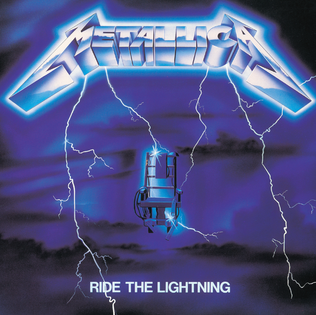
Ride the Lightning is the second studio album by the American heavy metal band Metallica, released on July 27, 1984, by the independent record label Megaforce Records. The album was recorded in three weeks with producer Flemming Rasmussen at Sweet Silence Studios in Copenhagen, Denmark. The artwork, based on a concept by the band, depicts an electric chair being struck by lightning flowing from the band logo. The title was taken from a passage in Stephen King's novel The Stand, in which a character uses the phrase to refer to execution by electric chair.

Metal Church is an American heavy metal band formed in 1980. Originally based in San Francisco, California, they relocated to Aberdeen, Washington the following year and briefly called themselves Shrapnel. Led by guitarist and songwriter Kurdt Vanderhoof, the band has released thirteen studio albums and is considered to be an integral part of the then-emerging Seattle heavy metal music scene of the 1980s. They achieved considerable popularity that decade, with two of their first three albums entering the Top 100 on the U.S. Billboard 200 chart. The band's early lyrical topics, such as conflict and paranoia, later expanded into philosophical, political and social commentary.
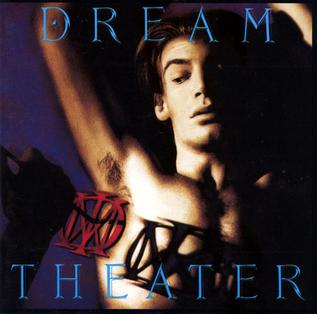
When Dream and Day Unite is the debut studio album by American progressive metal band Dream Theater, released on March 6, 1989, through Mechanic/MCA Records. The album is composed mostly of material that originally surfaced during the band's early years as Majesty, and it is the only Dream Theater album to be recorded with their full original lineup. James LaBrie replaced Charlie Dominici as the lead vocalist on all subsequent albums.

The Human Factor is the fourth album by American heavy metal band Metal Church, released in 1991. It was the band's only release on Epic Records.

Hanging in the Balance is the fifth album by American heavy metal band Metal Church, released in 1993. It was Metal Church's last album before their two-year break up from 1996 to 1998, and the last to feature vocalist Mike Howe for more than two decades until his return to the band in 2015. Reportedly Howe disliked the album cover so much that it contributed to his decision to leave the band. It is also their last studio album with longtime guitarist Craig Wells and drummer Kirk Arrington.
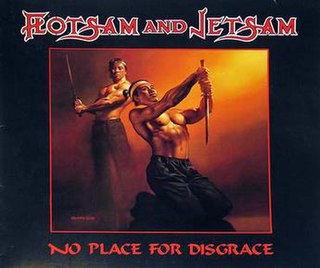
No Place for Disgrace is the second album by American thrash metal band Flotsam and Jetsam, released in 1988. This marked the band's first album release through a major label, Elektra Records, and was also their first album with the bass guitarist Troy Gregory, who had replaced Jason Newsted when the latter left the band in 1986 to join Metallica. Despite not playing on the album, three songs on it were co-written by Newsted.

Metal Church is the debut studio album by American heavy metal band Metal Church. The album was originally released by the independent record label Ground Zero in 1984. Based on the success of the album, the band was signed to a recording contract by Elektra Records, who reissued it in 1985. The cover art depicts a cruciform Gibson Explorer hidden in shadows and smoke.

The Dark is the second full-length album released by American heavy metal band Metal Church, released on October 6, 1986. This was the last album featuring the group's "classic" lineup of David Wayne, Kurdt Vanderhoof, Kirk Arrington, Duke Erickson, and Craig Wells, until Masterpeace (1999), which reunited the four-fifths of that lineup, with John Marshall replacing Wells.

Operation: Livecrime is a boxed set, covering the live performance of the album Operation: Mindcrime by the American heavy metal band Queensrÿche. It was released by EMI in 1991. After Queensrÿche toured in 1991 in support of Empire, record label EMI released this limited-edition set in two versions, one containing both a videocassette and a CD, the other containing both a videocassette and an audio cassette of live Operation: Mindcrime performances.
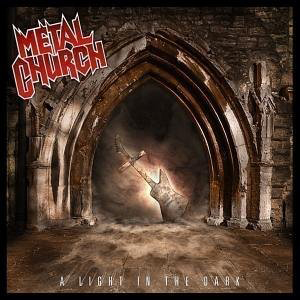
A Light in the Dark is the eighth studio album by American heavy metal band Metal Church, released on June 16, 2006 in Germany, June 19 in the rest of Europe, and June 27 in the US. This was the third Metal Church album to feature the cruciform Gibson Explorer on a cover, as well as the last to feature Jay Reynolds on guitar. It was also the first to feature Jeff Plate on drums.
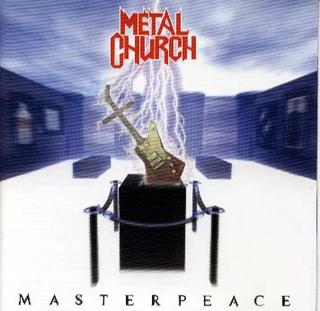
Masterpeace is the sixth studio album by American heavy metal band Metal Church released on July 22, 1999 via Nuclear Blast. It features the return of vocalist David Wayne, absent since The Dark (1986), being the band's final studio album to feature him before his death in May 2005. All original members recorded on Masterpeace except guitarist Craig Wells and drummer Kirk Arrington. Jeff Wade filled in for Arrington on the album and on tour. This was the second Metal Church album to feature the cruciform Gibson Explorer on a cover, the first being the band's 1984 debut.

Live is the first live album of heavy metal band Metal Church. The tracks were recorded at various locations during 1986 by the first Metal Church line-up and shelved for many years with little documentation about their origin. Only the track "Start the Fire" was previously released in the late 1980s, albeit with a different mix and possible studio treatment, on a compilation album called Time to Rock.

Ronny Munroe is an American singer, most noted as the lead vocalist of the heavy metal band Metal Church from 2003 until the band broke up in 2009. His second tenure with the band lasted from 2012 when the group reunited until 2014, where he left to "pursue other interests". He also had a brief stint as the vocalist for Lillian Axe. He was also the lead singer of progressive rock band Presto Ballet. In October 2011 Munroe joined the Trans-Siberian Orchestra, as a vocalist. In 2022, Munroe became the lead vocalist of Vicious Rumors. and Munroe's Thunder Project in 2016

This Present Wasteland is the ninth studio album by American heavy metal band Metal Church. The album was released in the US on September 23, 2008, and in Europe on September 26. This is the first album to feature guitarist Rick Van Zandt.

Mike Howe was an American heavy metal singer who performed with Metal Church, Heretic and briefly with mid 80s Los Angeles metal band Snair.
Heretic is an American heavy metal band from Los Angeles. Beginning in 1984, the group's initial career saw two releases on Metal Blade Records and touring alongside noted heavy metal groups. After their 1988 breakup, singer Mike Howe joined Metal Church while other members founded Reverend.

XI is the eleventh studio album by American heavy metal band Metal Church. It was released on March 25, 2016, and is the band's first album in 23 years to feature vocalist Mike Howe. XI was considered a comeback for both Metal Church and Howe since the latter's hiatus from the music industry following the band's first breakup in 1996; the album received generally positive reviews, and was their first studio album since 1989's Blessing in Disguise to enter the Billboard 200 chart, where it peaked at number 57, the band's highest chart position in their career. This is also Metal Church's final album with drummer Jeff Plate, who left the band almost exactly a year after its release.

Damned If You Do is the twelfth studio album by American heavy metal band Metal Church, released on December 7, 2018, through Rat Pak Records. It is their first release with former W.A.S.P. drummer Stet Howland, who replaced longtime member Jeff Plate in 2017, and their final album to feature vocalist Mike Howe before his suicide in 2021. Music videos were made for the songs "Damned If You Do" and "By the Numbers".
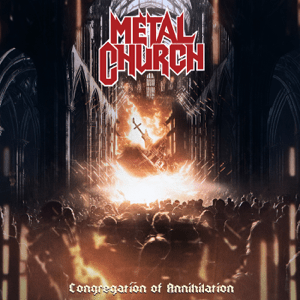
Congregation of Annihilation is the thirteenth studio album by American heavy metal band Metal Church, released on May 26, 2023 through Rat Pak Records. It is the first album to feature new vocalist Marc Lopes, who joined in the summer of 2022 as the replacement of the late Mike Howe.
















